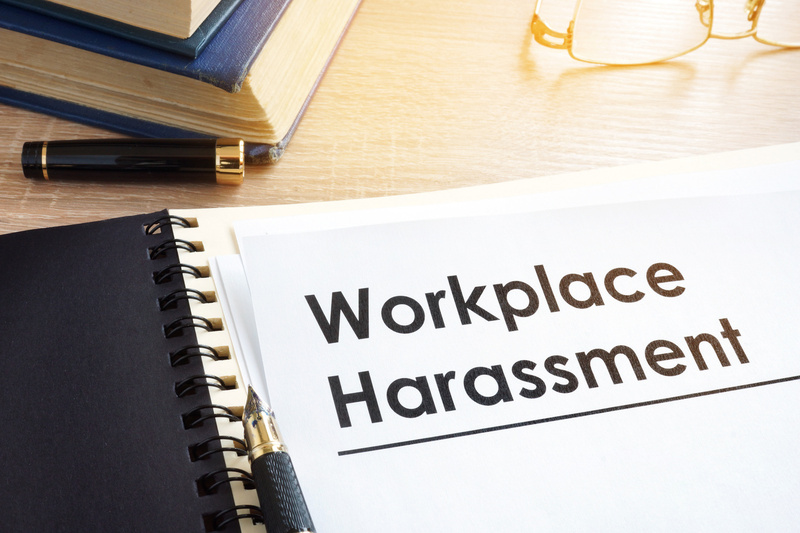Sexual Harassment In The Worksite: 3 Things To Know

Being a victim of workplace sexual harassment can be a frustrating experience. It can cause some serious adverse effects on your well-being. Perhaps, the impact of getting harassed sexually at work can be uncomfortable and devastating. For instance, it can adversely interfere with your work performance and bring about some psychological reactions.
For these reasons, it’s essential, along with training to educate yourself about the basics of workplace sexual harassment and how you can avoid or stop it in the workplace. You can make your employment conditions more comfortable for you and everyone in your worksite when you do this.
Below are the three things you need to know about workplace sexual harassment:
1. Definition And Types Of Workplace Sexual Harassment
To fully understand what workplace sexual harassment is, it’s essential to know its definition. Sexual harassment in the worksite refers to sex discrimination between co-workers, an employee and a client, and an employee and a superior. It’s considered a safety issue that employers should take seriously to keep their workers safe at work.
However, to better understand what workplace sexual harassment is, you need to familiarize yourself with its two common types, such as the following:
- Quid Pro Quo Harassment: It usually happens when a superior demands sexual favors in exchange for employment benefits, including promotions. For example, when a supervisor promises to give an employee a promotion in exchange for sleeping with them, it’s considered quid pro quo harassment.
- Hostile Work Environment: It occurs when an employer or an employee provides less favorable employment conditions to a specific employee in a way that affects their ability to perform their job. Common examples of this type of sexual harassment include discriminatory hiring procedures, colleagues sharing offensive images or making lewd comments, harassment based on stereotypes, and other similar conditions.
2. Things A Sexual Harassment Victim Can Do To Protect Their Rights

If you’re facing workplace sexual harassment, you need to do some things to protect your rights and get the justice you deserve. These can include:
- Try to communicate with the responsible party: If you think that talking to the person doing inappropriate conduct to you can be safe, then consider the idea of speaking and telling them to stop. By doing so, you’re letting them know that their conduct was unwanted or made you uncomfortable.
- Document incidents of sexual harassment: To ensure you can make the person doing improper acts accountable for harassment at work or stop the inappropriate conduct, you have to record every incident to come up with evidence. Make sure to write down all the details of the incidents, including the name of the person who harassed you, the date and time it happened, the name of witnesses, and other essential information.
- Report to the management: If you want the harassment to stop, it’s essential to report the incident to the management. They might have put some procedures that allow you to complain about workplace sexual harassment. For instance, you need to ensure the complaint is in writing to document it. This will serve as evidence that you notify your employer about what happened to give them a chance of dealing with it properly. Lastly, to resolve the issues relating to sexual harassment in the worksite more quickly, you should cooperate with the employer’s investigation.
- Participate in improving internal policies: If you’re looking to prevent sexual harassment at work to ensure improved employment conditions, it can be a good idea to work with your employer to develop better internal policies. For instance, you can request them to train staff on workplace sexual harassment and other protective procedures.
3. Other Essential Things About Workplace Sexual Harassment
There are also other essential things to learn about sexual harassment at the worksite. These can include:
Clients or customers can also do harassment: Most sexual harassment incidents are perpetrated by employees or employers. But, you should also be aware that clients and customers can also do it. As such, your employer has to protect you and other employees from improper sexual conduct initiated by outsiders. Just make sure they know about the incident to help stop it from recurring.
Harassment can happen to all genders: You might think that females are usually the victims of workplace sexual harassment. Although it might be a typical scenario, you must know that it can also happen to same-sex individuals. For example, a male employee can be liable for sexually harassing a male colleague.
Bottom Line
Suppose you believe you’ve been victimized by sexual harassment at work. In that case, you need to take specific steps to safeguard your rights and make the offender accountable for their inappropriate sexual conduct. By keeping the information mentioned above in mind, you’ll know what to expect and do when harassment happens or is about to happen. Consequently, you can minimize the adverse impact of this unfortunate situation on your personal and work life.